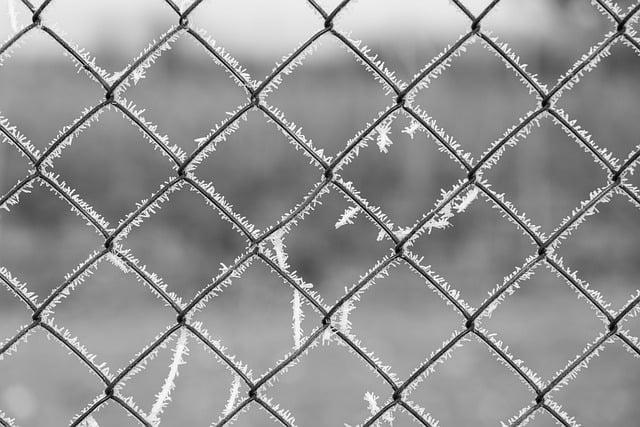In coastal regions, where harsh weather conditions and salt air pose unique challenges, selecting the right fencing material is paramount. This article explores durable wooden fencing as a superior solution for protecting properties along the shoreline. We delve into understanding the specific requirements of these areas, highlighting the benefits of wood fencing, including its natural beauty and longevity. By examining various wood species and installation techniques tailored to coastlines, readers will discover how to invest in a robust and aesthetically pleasing fence that stands the test of time against coastal elements.
- Understanding Coastal Fence Requirements
- Benefits of Durable Wooden Fencing
- Choosing the Right Wood Species
- Installation Considerations for Coastlines
- Maintenance and Longevity Tips
Understanding Coastal Fence Requirements
When considering fencing for coastal areas, understanding the unique requirements is essential. Saltwater and moisture are major factors that can affect fence durability. Unlike traditional materials, wooden fences in these regions need to be specifically treated to withstand these environmental conditions without compromising aesthetics. The choice of wood species plays a significant role; some varieties are naturally more resistant to decay and corrosion caused by saltwater.
Additionally, the fence’s design should consider the frequent exposure to wind and waves. Stronger, sturdier posts and cross-bracing can enhance structural integrity, ensuring the fence remains intact during harsh weather conditions. In coastal areas, a robust and well-designed wooden fence not only offers visual appeal but also provides much-needed privacy and security while withstanding the elements.
Benefits of Durable Wooden Fencing
Durable wooden fencing offers an attractive and natural solution for coastal areas, providing both aesthetic appeal and practical benefits. One of its key advantages is its ability to withstand harsh weather conditions, including high winds, heavy rain, and salty sea air. Treated and pressure-impregnated woods are less susceptible to rot, decay, and insect infestation, ensuring the fence remains strong and stable over time. This durability translates into a longer lifespan, reducing replacement costs and maintenance efforts.
Furthermore, wooden fences can contribute to the overall ambiance and character of coastal neighborhoods. They blend seamlessly with the natural environment, enhancing the beauty of sandy beaches, rocky shores, and lush landscapes. Customizable designs allow homeowners and local authorities to create unique boundaries while preserving the area’s distinct charm. Moreover, these fences provide privacy, security, and noise reduction, making them an excellent choice for residential and commercial properties in coastal settings.
Choosing the Right Wood Species
When selecting wood for coastal fencing, choosing the right species is paramount to ensure durability and longevity against harsh weather conditions. Different woods have varying levels of resistance to salt spray, moisture, and termite damage. For coastal areas, look for species like cedar or redwood, known for their natural resistance to decay and insects. These woods have high oil and resin content, making them less susceptible to water absorption, which can lead to warping or rot.
Additionally, exotic hardwoods such as Ipe or teak offer exceptional durability and beauty. While they may be more expensive, these woods can withstand extreme conditions and require minimal maintenance over time. Considering the climate, local resources, and budget will help guide your decision on which wood species is best suited for your coastal fencing project.
Installation Considerations for Coastlines
When installing durable wooden fencing in coastal areas, several unique considerations come into play. One of the primary concerns is the impact of salt air and frequent exposure to moisture, which can accelerate wood decay and compromise the fence’s structural integrity over time. Therefore, selecting a high-quality, treated wood suitable for exterior applications is essential. Look for woods like cedar or pressure-treated pine, which have natural resistance to rot and insects.
Another crucial aspect is proper installation techniques tailored to coastal environments. This includes ensuring adequate drainage around the fence to prevent water accumulation, using corrosion-resistant hardware, and possibly incorporating additional supports or bracing to withstand stronger winds and storms prevalent in these areas. Regular maintenance, such as re-staining or sealing the wood, will also be necessary to extend the life of the fence and maintain its aesthetic appeal.
Maintenance and Longevity Tips
Proper maintenance is key to ensuring your wooden fence lasts for years in coastal environments, where it’s constantly exposed to salt air and moisture. Regular cleaning with a soft brush or cloth helps remove salt buildup, which can cause rot over time. A water-based preservative applied every few years will also shield the wood from these elements.
To maximize longevity, choose high-quality, treated wood designed for outdoor use, especially in coastal settings. Keep an eye out for any signs of damage or rot and repair them promptly to prevent further deterioration. Regular inspection is crucial, as early intervention can save you from costly replacements down the line.
